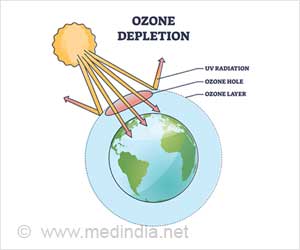A research indicates, bald and golden eagles in North America may be exposed to dangerously high levels of PBDEs, which are chemicals used in the production of a wide variety of textiles.

"The PBDE concentrations we observed in eagle livers suggest a range of exposure, from nearly no detection to concentrations that may be significant toxicologically," wrote the-authors of the Environmental Toxicology study. "More information is required to evaluate trends in exposure and accumulation in eagles in the northwest United States and whether trends or source areas differ regionally across North America."
PBDEs are structurally akin to the PCBs and other polyhalogenated compounds, consisting of two halogenated aromatic rings. PBDEs are classified according to the average number of bromine atoms in the molecule. The health hazards of these chemicals have attracted increasing scrutiny, and they have been shown to reduce fertility in humans at levels found in households. Their chlorine analogs are polychlorinated diphenyl ethers (PCDEs). Because of their toxicity and persistence, the industrial production of some PBDEs is restricted under the Stockholm Convention, a treaty to control and phase out major persistent organic pollutants (POPs).
Source-Eurekalert












